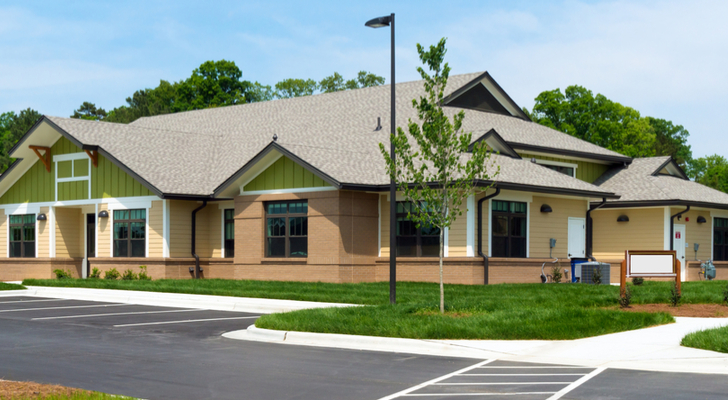Whether the housing market is merely healthy or dangerously overheated is largely a matter of perspective. And, as is usually the case, the answer to the question largely waits for information that will only materialize in the future.
Broadly speaking, though, markets — all markets — often end up climbing a wall of worry rather than crashing.
That’s a clever way of saying there’s not a housing bubble to pop — at least not yet anyway. Even the prospect of higher interest rates on mortgage loans won’t likely bring an end to the housing boom unless rising rates (and the inflation they’re meant to quell) jump-start an outright recession.
And that’s not likely to happen anytime soon.
Mixed Message
The headlines sound and feel dire. The most recent entry in this log is Wednesday’s “Half of the biggest housing markets in the US are overvalued,” implying that sooner than later, the housing market going to come crumbling down like 2008.
Underscoring the idea is March’s home price report, which says home values have outpaced income growth over the course of the past year by appreciating 7%.
Take a closer look at the data, though. It reveals that middle-class and starter homes just aren’t available. Only 21% of the total number of homes for sale are priced in the bottom third of home prices, where homes are needed the most. At the other end of the spectrum, high-end homes that aren’t especially in hot demand, you’ll find 51% of the total homes for sale.
The reason? Home builders like PulteGroup, Inc. (NYSE:PHM) and KB Home (NYSE:KBH) just aren’t as gung-ho about new projects as they were a decade ago, right before the subprime mortgage meltdown wreaked havoc.
Then again, who can blame them? Bob Filka, CEO of the Home Builders Association of Michigan, recently opined, “In general nobody is building starter homes now. I would argue that, in most markets, you can’t build at those lower price points and make money.”
Home builders, meanwhile, are still broadly stoked about their revenue prospects, knowing there’s still plenty of high-end business and low-end (often multiunit housing) business to go around. The NAHB/Wells Fargo Housing Market Index (HMI), which measures home builder optimism, slipped a bit in April, but remains near multiyear highs
as well as in an uptrend.
Barking Up the Right Tree
And there’s the rub. There’s still good money to be made in the business. But it’s not to be made by serving the biggest segment of the market, a segment that’s not profitable for the building industry but is still plenty profitable for realtors and current owners of homes in that mid-priced segment. The new-construction market is at the extreme end of the income scale.
John Burns Real Estate Consulting crunched the numbers to figure out why. The firm found that the United States true “middle class” has shrunk from 57% of the population in 1970 to 45% now. The wealthier echelon has expanded from 12% then to 19% now, while the lower third of earners now make up 35% of the country’s consumers. That figure was 31% nearly 50 years ago.
The shifts seem minor on the surface, but for a housing market that’s amazingly sensitive, those shifts can make a huge impact.
It’s this same shift that negates a big piece of interest rate-related worries.
Wealthier home buyers can dismiss the added costs of higher interest rates when making a mortgage payment, if they have a mortgage payment at all. A wide swath of them pay cash for homes.
At the other end of the spectrum, low-end home payments are often so low, the added cost of higher loan rates is negligible. The segment getting squeezed is, once again, the middle class, which are struggling to find affordable homes in the first place.
And that’s assuming rising rates become a long-term problem for the housing market. Even with three or four more rate hikes expected this year, interest rates would still be at historically low levels.
Bottom Line for the Housing Market
Inventory of homes in the middle of the price scale is scant, for a reason, driving their values much higher. With the underpinnings for this situation unlikely to change anytime soon (strong employment levels, solid wage growth, and a growing economy against a backdrop of home builders not interested in building smaller houses), don’t look for things to change.
Bloomberg’s Noah Smith recently assessed the situation in his “Middle-Class Doldrums Don’t Add Up to a Crisis” article, suggesting this piece of the housing market is in a not-too-hot, not-too-cold zone that’s difficult to see.
Perhaps more important, don’t mistake the overarching superficial data as evidence that a true housing bubble is inflating and aching to be popped. With corporate earnings still growing and commodity prices on the rise — yet tempered — the stage is set for more of the same kind of growth until further notice.
The worst-case scenario here would be home builders finally deciding they can build mid-sized homes that they can sell to middle class workers that can finally afford them — a scenario that may be taking shape right now anyway.
It could take years for builders to ramp up their output to a meaningful degree while maintaining a healthy supply/demand balance the whole time that keeps most home prices edging higher.
Meantime, as urban areas get and remain unaffordable for workers, employers may find themselves paying better wages or moving their business out to the suburbs and propping up those home values instead.
As of this writing, James Brumley did not hold a position in any of the aforementioned securities. You can follow him on Twitter, at @jbrumley.

